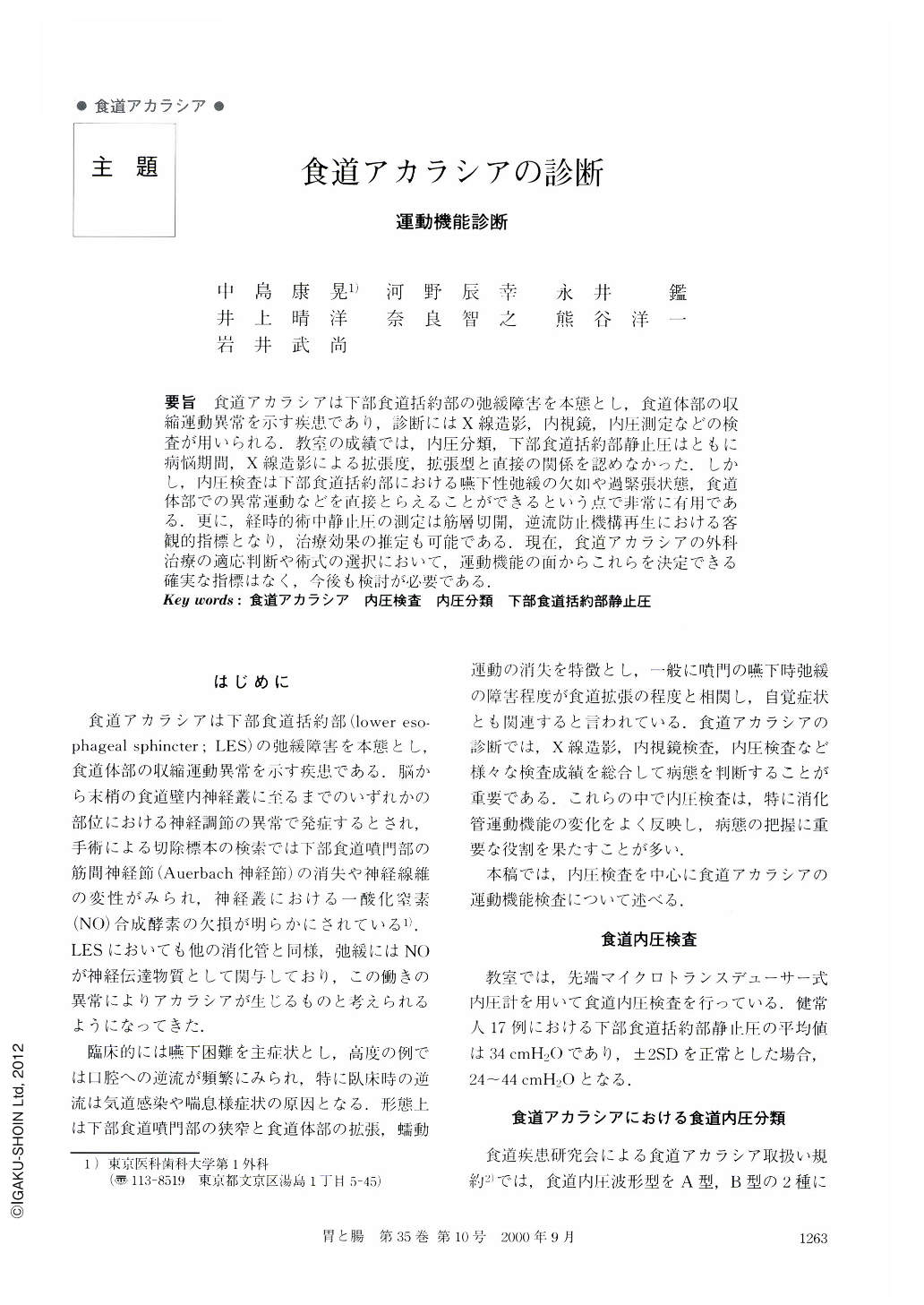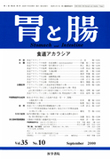Japanese
English
- 有料閲覧
- Abstract 文献概要
- 1ページ目 Look Inside
要旨 食道アカラシアは下部食道括約部の弛緩障害を本態とし,食道体部の収縮運動異常を示す疾患であり,診断にはX線造影,内視鏡,内圧測定などの検査が用いられる.教室の成績では,内圧分類,下部食道括約部静止圧はともに病悩期間,X線造影による拡張度,拡張型と直接の関係を認めなかった.しかし,内圧検査は下部食道括約部における嚥下性弛緩の欠如や過緊張状態,食道体部での異常運動などを直接とらえることができるという点で非常に有用である.更に,経時的術中静止圧の測定は筋層切開,逆流防止機構再生における客観的指標となり,治療効果の推定も可能である.現在,食道アカラシアの外科治療の適応判断や術式の選択において,運動機能の面からこれらを決定できる確実な指標はなく,今後も検討が必要である.
Esophageal achalasia is the disease showing disorders of relaxation of the lower esophageal sphincter (LES) and contraction of the esophageal body. Esophagogram, endoscopy, and manometry are used for the diagnosis. We found that both the manometric classification and the resting pressure of the LES had no relationship with suffering time, grade of esophageal dilatation, and type of esophageal dilatation. Manometry is helpful because it can show the lack of relaxation of the LES, and the abnormal motility of the esophageal body. Moreover, data concerning the resting pressure of the LES during surgical treatment becomes an objective indicator of the appropriate myotomy and the anti-reflux procedure.
In the future, from the viewpoint of the esophageal motile function, a definite criterion for deciding whether an operation is indicated, and the type of surgical procedure to be used in the treatment of esophageal achalasia will be established.

Copyright © 2000, Igaku-Shoin Ltd. All rights reserved.


